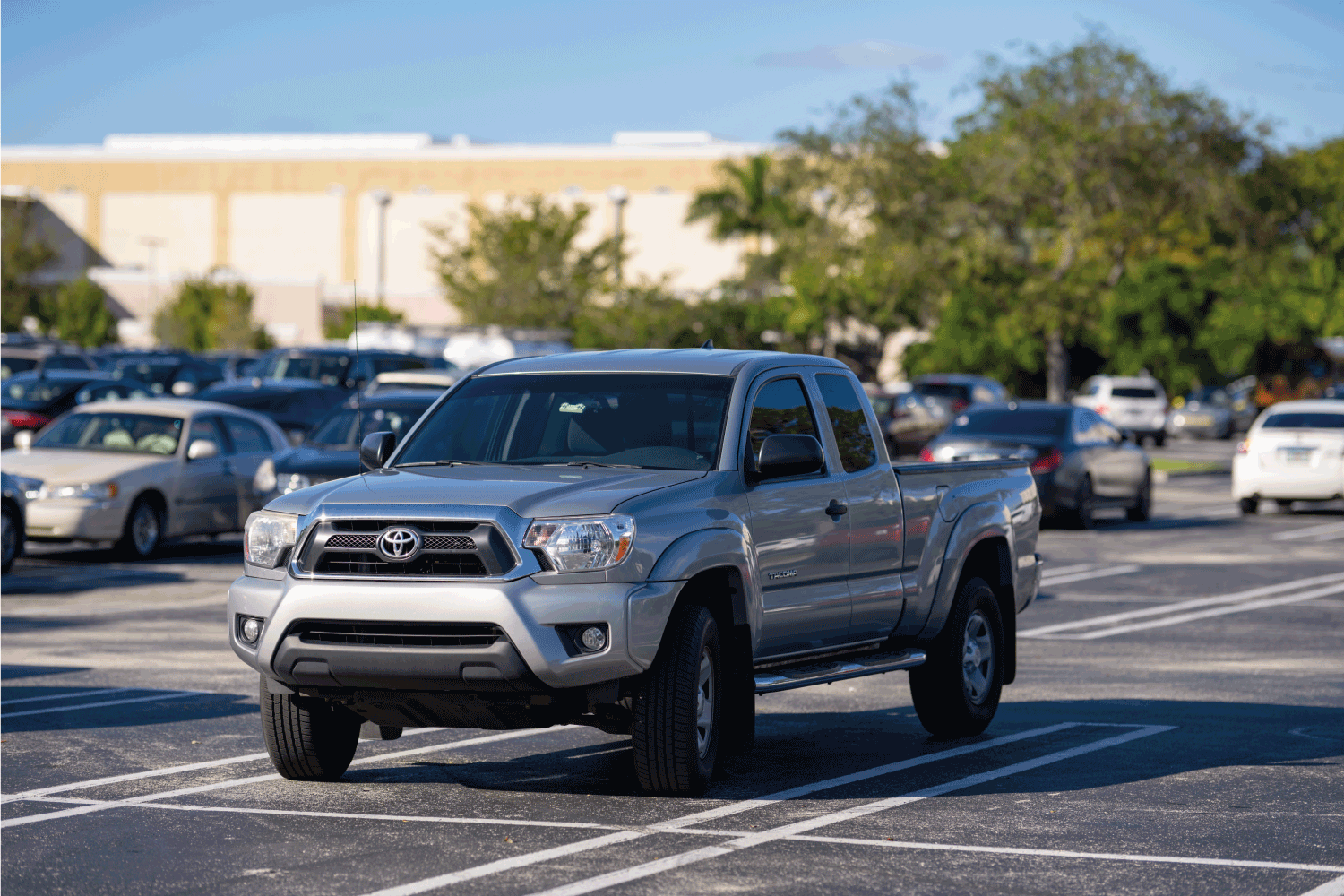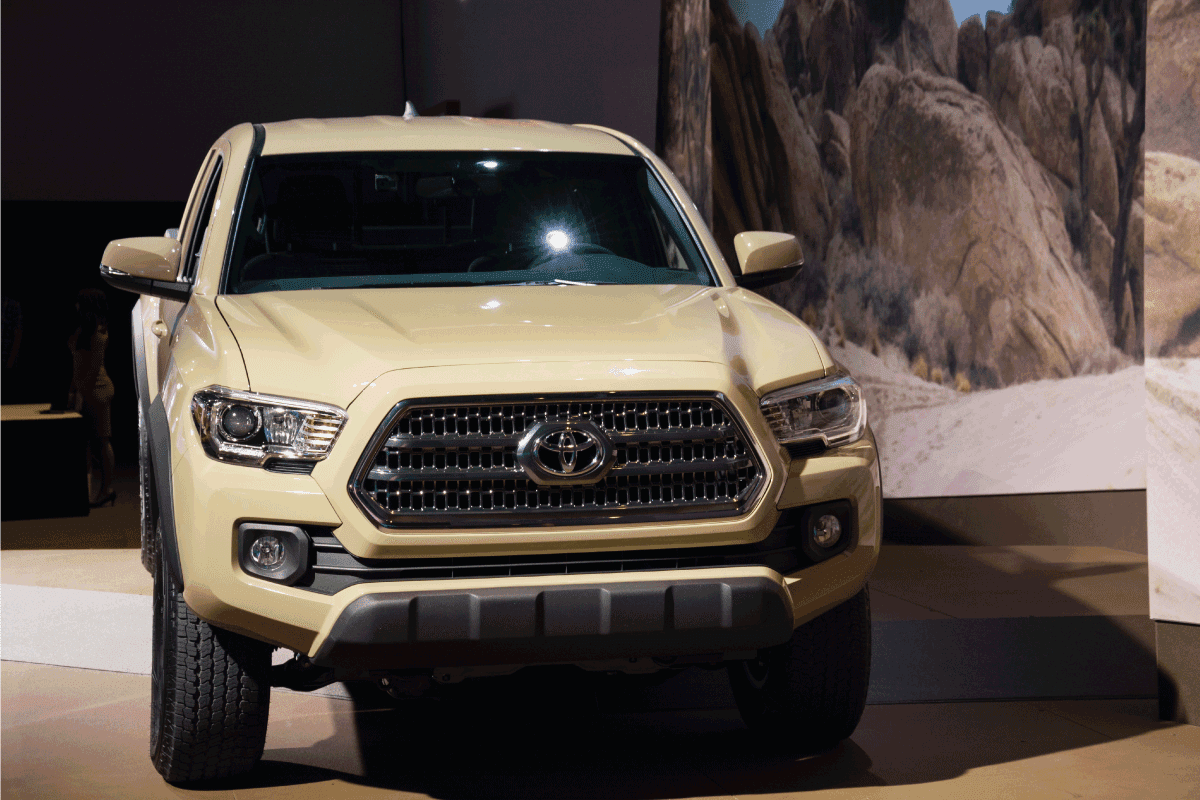It's great to be able to flat tow another vehicle when you travel on your motorhome. It offers convenience and flexibility that'll make your camping experience so much better. But you can't just take any vehicle with you. Today, we'll share with you if you can dinghy tow your Toyota Tundra behind your RV based on what we've learned from the experts.
You cannot flat tow a Toyota Tundra behind a motorhome. This is specifically mentioned by the manufacturer, as these units come with automatic transmissions and don't have the necessary equipment and accessories for safe four-down towing.
Continue reading as we explain further why you cannot flat tow a Toyota Tundra. We'll also discuss whether flat towing is bad for your vehicle's transmission, if a pickup truck is great for flat towing, how to determine your motorhome's towing capacity, and what equipment you need to prepare for flat towing.

Flat Towing And Your Toyota Tundra
Larger motorhomes have a towing capacity that'll allow you to flat tow another vehicle behind. Flat towing, four-down towing, or dinghy towing is having another vehicle hitched to the rear of your motorhome. All of its wheels are on the ground as they roll along behind the RV.
Flat towing offers a lot of advantages. It gives you more flexibility to move when you reach your camping destination. You can simply unhitch the vehicle, and you're free to roam the place without having to bring your mobile home with you.
It's also more fuel-efficient that way. You also have additional room for storage or even sleeping quarters when you bring another vehicle along.
You just have to choose the right vehicle for flat towing behind your motorhome. You'll need to have specific towing equipment and accessories in place for four-down towing. Speed or distance limits must be observed properly to prevent damage to the car transmission.
So, how about a Toyota Tundra? Unfortunately, the truck manufacturer says that their Toyota Tundra models from 2000 to 2020 cannot be flat towed.
The main reason behind this is that they come with an automatic transmission that requires the engine to be running to be able to lubricate different components.
When dinghy towing, the engine is turned off, so the pump that supplies oil to its moving parts won't be able to do its job. Since the wheels are turning as you flat tow, they require continuous lubrication. Otherwise, it can cause severe damage to the transmission.
Vehicles with a manual transmission are more suitable to be flat towed behind a motorhome. It is best to check the owner's manual or manufacturer's website for their recommendation if your car can be towed with all its four wheels on the ground.
Is Flat Towing Bad For Transmission?
When flat towing, all the wheels of your vehicle are on the ground. This means that as the vehicle moves, the wheels are also turning. As they move, they need to be lubricated properly to avoid damaging the transmission.
Most cars with manual transmissions can be flat towed without requiring any modifications. Lubrication won't be a problem. It is also okay for vehicles with an automatic transmission if lubrication is provided by the output shaft.
If it is the input shaft, however, you would need to use a lube pump system to help direct the oil and cooling fluid while towing when the engine isn't running.
In the end, four-down towing isn't necessarily bad for your car transmission as long as you make the modifications (if needed) and tow your vehicle properly.
Is A Pickup Truck A Good Dinghy For A Motorhome?
Pickup trucks are great for towing behind a motorhome. Some even say that these are the ultimate dinghy vehicle because they are convenient to set up and easy to tow.
Pickups are versatile vehicles. Their interiors can make you feel very comfortable as you go around the town to see more places (or run errands) without having to bring your big coach with you.
These trucks are rugged on the outside so you can take them anywhere. They even have an added bonus of having a truck bed which allows you to bring your man toys and more camping stuff with you! You'll definitely have more fun on your outdoor adventure!
It's good to have your pickup in tow. But of course, you have to check if it can be flat towed and if your motorhome's towing capacity is up to the task.

How Do You Determine The Towing Capacity Of A Motorhome?
It's great to bring your man toys and perhaps a boat or 4WD when you go camping. Having them in tow will truly enhance your outdoor adventure. You can explore more of the world around you.
But before you get excited, it is important to know the towing capacity of your motorhome. It involves some math, so you better have your calculator on hand.
First, let's familiarize ourselves with some terms.
Curb Weight
This refers to the weight of your RV with its fuel tank full. Just that. It doesn't include the weight of your water tanks, propane, cargo, accessories, and passengers that you've got in your motorhome.
Unloaded Vehicle Weight (UVW)
This is the weight of your motorhome that's filled with all the fluids required for its operation. This includes fuel, LP, and water. It does not include accessories, cargo, and occupants.
Cargo Weight
It includes everything added to the curb weight: water, propane, cargo, accessories, and occupants.
Gross Vehicle Weight Rating (GVWR)
This is the maximum allowable total weight that your motorhome can carry. You can find this important information on your motorhome's Safety Compliance Certification Label located near the driver seat.
Gross Vehicle Weight (GVW)
This is the actual weight of your vehicle which is its curb weight plus the weight of all the cargo, water, propane, accessories, and occupants of the motorhome. Take note that your GVW shouldn't go beyond your vehicle's GVWR.
Gross Combination Weight (GCW)
This is the combined actual weight of your fully-loaded motorhome and fully-loaded trailer.
Gross Combination Weight Rating (GCWR)
GCWR is the maximum GCW that your RV can carry. Your GCW should not go beyond this limit or your motorhome will have a high risk of getting damaged.
This information is shown on the spec sheets or towing guide provided by the chassis manufacturer. It is dependent on the size of the engine, axle ratio, and GVWR of the RV's chassis.
Whew, that was a lot! But RVers need to know these by heart to ensure that they do not exceed the limits set by the manufacturers to minimize safety risks. But we're not yet done.
Here's where we finally do the math to determine your motorhome's towing capacity. Just subtract the Gross Vehicle Weight (GVW) from the Gross Combined Weight Rating (GCWR) and you'll be able to determine your RV's towing capacity.
You should also check the Gross Trailer Weight Rating that's specified on your motorhome hitch and make sure you do not go past this for safety purposes.
What Equipment Is Needed To Flat Tow A Vehicle?
As mentioned above, it is important to flat tow your vehicle properly. It begins with preparing the right equipment needed for the job. Here's a list of what you have to put together:
- Receiver hitch - This can be found at the rear of your motorhome. If your RV doesn't come with one, you need to have one installed.
- Base plate kit - This is attached to the front of the vehicle.
- Tow bar - This will connect your vehicle to the motorhome. There are different types of tow bars: A-frame, self-aligning towed vehicle-mounted receivers, and self-aligning coach-mounted receivers.
- Tow bar wiring kit - It connects the electric wires and lights of your vehicle to the lighting board of your motorhome.
- Safety cables - These serve as a precaution in case the dinghy is accidentally uncoupled. It will ensure that your vehicle stays locked to your motorhome.
- Supplemental braking system - So that you can apply the brakes on your motorhome and dinghy concurrently.
Check your vehicle information to see if it can be flat towed or if it requires modifications before you can do so. Some RVers like to do the installation by themselves, but of course, it's always best to entrust it to the professionals so that you're sure about the quality of the work.

To Wrap Up
The Toyota Tundra isn't suitable for flat towing behind a motorhome. But there are other pickup trucks out there that you can take with you on your next camping adventure.
Just make sure that your coach can take on its weight, the towed vehicle has proper lubrication, and you've got the right equipment installed for safe towing.
For more articles about Toyota Tundra, you may read these posts:
